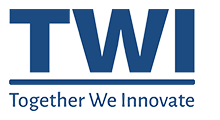Plastic parts manufacturing is a complex process involving consideration of material properties, part design, tooling, processing parameters, quality control, and costs. However, there are several ways that manufacturers can improve moldability of parts while also reducing overall production costs. Here are seven key methods:
- Simulate mold filling – By using mold filling simulation software like Moldflow, manufacturers can digitally preview how melted plastic will flow into the mold tool. This allows identification of problems like air traps, too fast/slow fill rates, weld lines, etc. before any physical tooling is produced. Tweaks can be made digitally to improve moldability.
- Use standardized components – Standardizing certain components like fasteners, attachments, housing geometries, etc. across different products can allow reuse of tooling and molds. This reduces tooling costs and lead times. Designers should maximize standard parts where possible.
- Simplify part geometries – Keeping part geometries as simple as possible with minimal complex contours, undercuts, or thin-walled sections leads to much easier tool design, machining, and moldability. It also reduces tool wear over time yielding longer tool life. Even minor design tweaks can improve manufacturability.
- Select optimal materials – With advanced plastic materials like engineered resins and composites, manufacturers can maintain or even improve mechanical properties while using less material. Lighter weight parts also require less force during manufacturing lowering equipment wear.
- Refine gate and runner systems – The gate, runner and cooling channel design in molds has a very significant impact on fill rates, temperature control, and cycle times. Advanced simulation can help optimize this but often simple tweaks by an experienced mold maker can greatly boost performance.
- Implement standardized quality processes – Consistent processes for incoming inspection of materials, equipment maintenance, tool tolerances, processing parameters, part inspection and testing, and control of non-conformances are essential for cost-effective large volume production. This helps minimize defects and keeps lines running efficiently.
- Consider design for automated assembly – Parts that allow easy automated assembly rather than complex manual labor provide a much lower total cost solution. This may influence features like attachment designs, component symmetries, handling features, or assembly sequences.
Following these tips will enable plastic product designers and manufacturers to reap the benefits of lower costs and shorter development times while still meeting functionality, quality and durability goals.



